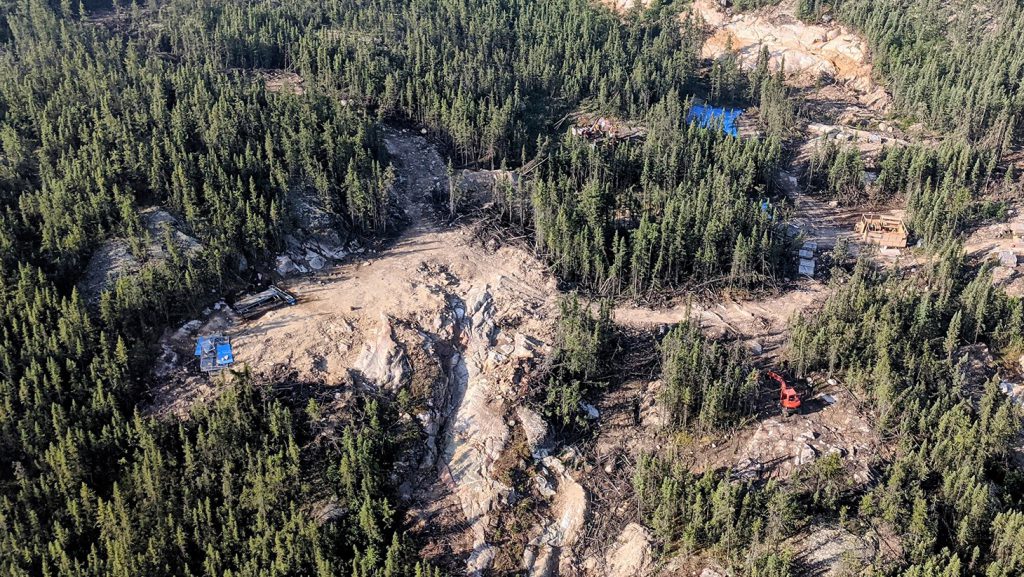Appia Rare Earths drills 11.7 wt% TREO over 6.99 metres at Alces Lake, Saskatchewan

Appia Rare Earths & Uranium Corp. [API-CSE; APAAF-OTCQB] reported complete WRCB assay results from its 2021 drilling program where it has discovered a massive new rare earth element (REE) bearing zone in the WRCB area of the 100%-owned Alces Lake high-grade rare earth elements and gallium property, Athabasca basin area, northern Saskatchewan.
Further assay results from 2021 drilling in the Western Anomaly area of the Alces Lake claims block will be released in the near future. Highlights include drill hole Wilson 21-WRC-014 that intersected 15.81 wt% TREO over a drilled width of 3.67 metres within a broader interval of 6.99 metres of 11.70 wt% TREO.
Wilson 21-WRC-016 intersected 24.30 wt% TREO over a drilled width of 1.93 metres within a broader interval of 3.19 metres of 15.38 wt% TREO and 17.85 wt% TREO over a drilled width of 2.69 metres within a broader interval of 11.6 metres of 5.71 wt% TREO.
Richard 21-WRC-053 intersected 17.12 wt% TREO over a drilled width of 1.08 metres within a broader interval of 4.29 metres of 5.19 wt% TREO. High-grade, at or near surface mineralization at WRCB now correlated along strike length for 100 metres. New discovery of the AMP zone, which is continuous from surface to a down plunge extent of 300 metres and remains open. The true width of the mineralized zone is known to exceed 10 metres
Frederick Kozak, President, said, “The wait for the assay results was worth it. Appia has identified the continuity of the WRCB shallow high-grade mineralization with a strike length of approximately 100 metres and consistently strong assay values. However, the new discovery of the massive AMP zone from surface to depth has revealed it is large and continuous across all of the WRCB area and open along strike within the NNW-trending kilometre-scale structural corridor. This could be a blockbuster for future rare earths production, as Appia continues to move the Alces Lake rare earths discovery towards potential development.”
The shallow zones at WRCB show the high-grade mineralization and its continuity over approximately 100 metres of strike length; drilling in 2021 has essentially confirmed the separately named segments of WRCB as one continuous accumulation of high-grade mineralization. Approximately 54 holes were drilled at WRCB in 2021, for a total of 5,297 metres. To the end of 2021, 119 holes have been drilled into WRCB for a total of 8,590 metres.
Hosted within a planar geological structure, the AMP zone is defined by a plunging chute of mineral enrichment and interpreted tectonic thickening. This is a newly discovered style of mineralization at Alces Lake, identified and delineated for the first time in 2021. Outcropping in the WRCB area, the zone has uninterrupted continuity from surface to a down plunge extent of 300 meters and remains open down plunge.
The Alces Lake project encompasses some of the highest-grade total and critical REEs and gallium mineralization in the world, hosted within several surface and near-surface monazite occurrences that remain open at depth and along strike.
Appia recommenced drilling at Alces Lake in mid-March 2022 and plans to drill significantly deeper holes compared to the 100 holes (approximately 8,076 metres) drilled in 2021. This is designed to allow Appia to determine continuity at depth and along the identified REE mineralization trends as the company works towards a maiden resource estimate in accordance with NI 43-101 for the area.
The Alces Lake project is located in the same provincial jurisdiction that is developing a “first-of-its-kind” rare earth processing facility in Canada (currently under construction by the Saskatchewan Research Council and scheduled to become operational in early 2023).
